
In folklore, a ghost is the soul or spirit of a dead person or non-human animal that is believed to be able to appear to the living. In ghostlore, descriptions of ghosts vary widely, from an invisible presence to translucent or barely visible wispy shapes to realistic, lifelike forms. The deliberate attempt to contact the spirit of a deceased person is known as necromancy, or in spiritism as a séance. Other terms associated with it are apparition, haunt, haint, phantom, poltergeist, shade, specter, spirit, spook, wraith, demon, and ghoul.
A haunted house, spook house or ghost house in ghostlore is a house or other building often perceived as being inhabited by disembodied spirits of the deceased who may have been former residents or were otherwise connected with the property. Parapsychologists often attribute haunting to the spirits of the dead who have suffered from violent or tragic events in the building's past such as murder, accidental death, or suicide.

Berkeley Square is a garden square in the West End of London. It is one of the best known of the many squares in London, located in Mayfair in the City of Westminster. It was laid out in the mid 18th century by the architect William Kent, and originally extended further south. The garden's very large London Plane trees are among the oldest in central London, planted in 1789.
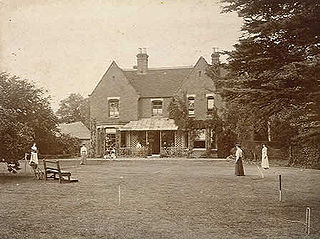
Borley Rectory was a house located in Borley, Essex, famous for being described as "the most haunted house in England" by psychic researcher Harry Price. Built in 1862 to house the rector of the parish of Borley and his family, the house was badly damaged by fire in 1939 and demolished in 1944.
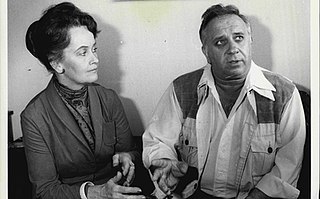
Edward Warren Miney and Lorraine Rita Warren were American paranormal investigators and authors associated with prominent cases of alleged hauntings. Edward was a self-taught and self-professed demonologist, author, and lecturer. Lorraine professed to be clairvoyant and a light trance medium who worked closely with her husband.
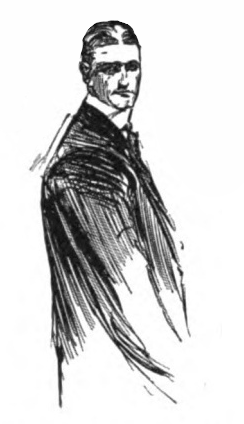
Thomas Carnacki is a fictional occult detective created by English fantasy writer William Hope Hodgson. Carnacki was the protagonist of a series of six short stories published between 1910 and 1912 in The Idler magazine and The New Magazine.

The ghost of U.S. president Abraham Lincoln, also known as the White House Ghost, is said to have haunted the White House since Lincoln's assassination in 1865. Lincoln's ghost has also been said to haunt many of his former residences in Springfield, Illinois, including his former law office.

Peter Underwood was an English author, broadcaster and parapsychologist. Underwood was born in Letchworth, Hertfordshire. Described as "an indefatigable ghost hunter", he wrote many books which surveyed alleged hauntings within the United Kingdom - beginning the trend of comprehensive regional 'guides' to (purportedly) haunted places. One of his well-known investigations concerned Borley Rectory, which he also wrote about.
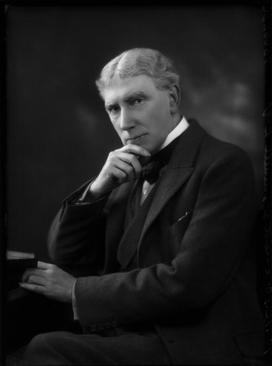
Elliott O'Donnell was an English author known primarily for his books about ghosts. He claimed to have seen a ghost, described as an elemental figure covered with spots, when he was five years old. He also claimed to have been strangled by a mysterious phantom in Dublin.
Tales of ghosts from the American Civil War have been popularly shared since its end. Among the locales that have become known for Civil War ghost stories are the Sharpsburg battlefield near Sharpsburg, Maryland; the Chickamauga battlefield in Georgia; Harper's Ferry, West Virginia; Buras, Louisiana; and Warren, Arkansas.

Ballechin House was a Georgian estate home near Grandtully, Perthshire, Scotland. It was built in 1806, on the site of an old manor house which had been owned by the Steuart family since the 15th century. This house, which stands in Ballechin Wood, is the subject for a popular local ghostlore story.

Being the site of military battles, deadly duels, assassinations, untimely deaths, and other associated tragedies, there are a number of reportedly haunted locations in Washington, D.C., the capital city of the United States.

The Ghosts of Berkeley Square is a 1947 British comedy film, directed by Vernon Sewell and starring Robert Morley and Felix Aylmer. The film is an adaptation of the 1944 novel No Nightingales by Caryl Brahms and S. J. Simon, inspired by the enduring reputation of the property at 50 Berkeley Square as "the most haunted house in London". Despite its stellar cast of highly respected character actors and its inventive use of special effects, the film proved less successful at the box-office than had been hoped.
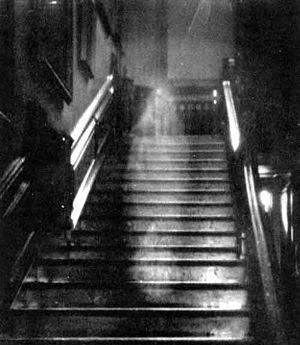
The Brown Lady of Raynham Hall is a ghost that reportedly haunts Raynham Hall in Norfolk, England. It became one of the most famous hauntings in the United Kingdom when photographers from Country Life magazine claimed to have captured its image. The "Brown Lady" is so named because of the brown brocade dress it is claimed she wears.
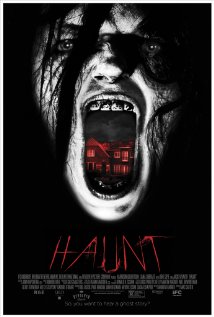
Haunt is a 2013 American supernatural horror film directed by Mac Carter in his feature film directorial debut. The film premiered at the Film Society of Lincoln Center on November 6, 2013, and was later released on video on demand on February 7, 2014. Haunt stars Harrison Gilbertson as a teenager who moves into a new house and goes through not only a sexual awakening but also a terrifying haunting.
The Cheltenham Ghost was an apparition said to haunt a house in Cheltenham in western England. The building in Pittville Circus Road was the home of the Despard family who saw the ghost of a veiled woman on several occasions in the 1880s.














